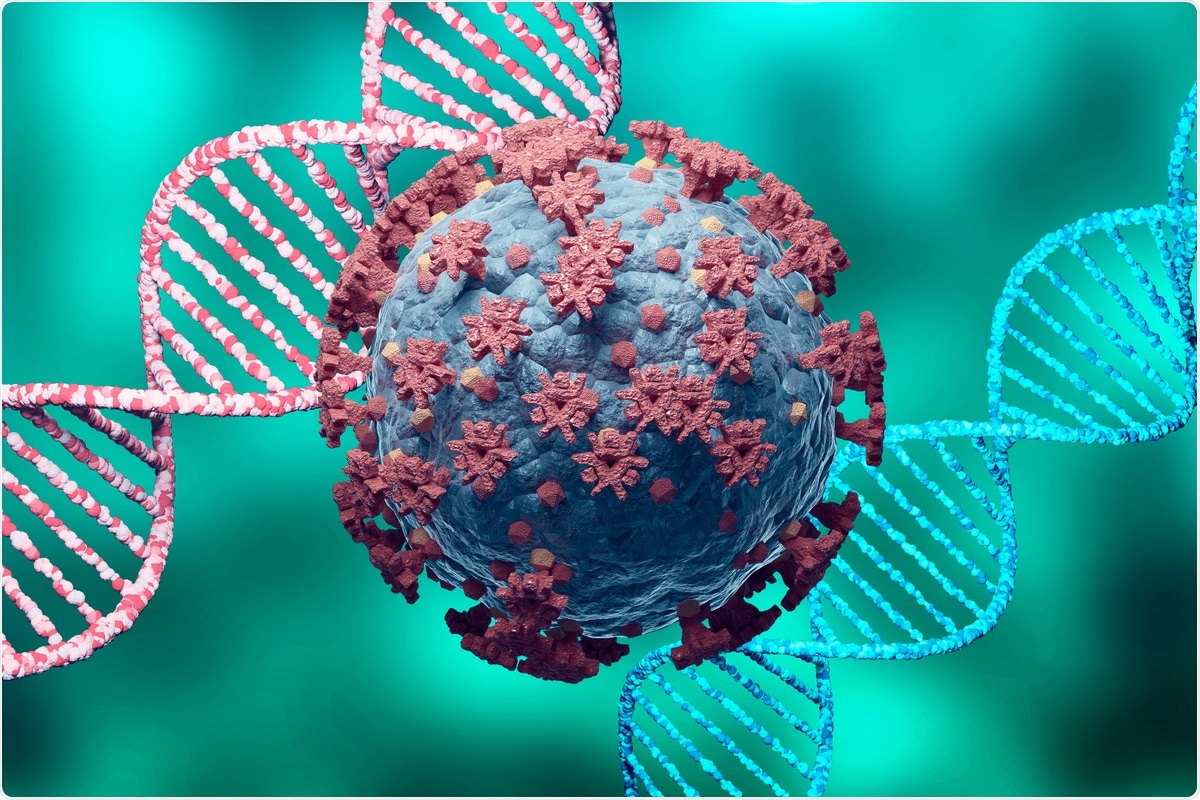The currently available coronavirus disease 2019 (COVID-19) vaccines have markedly reduced the burden of severe acute respiratory syndrome coronavirus 2 (SARS-CoV-2) where available. Still, the global disparity in availability and concerns regarding the emergence of vaccine-evading mutants continue to encourage vaccine development.
 Study: SARS-CoV-2 DNA Vaccine INO-4800 Induces Durable Immune Responses Capable of Being Boosted in a Phase 1 Open-Label Trial. Image Credit: Adao/ Shutterstock
Study: SARS-CoV-2 DNA Vaccine INO-4800 Induces Durable Immune Responses Capable of Being Boosted in a Phase 1 Open-Label Trial. Image Credit: Adao/ Shutterstock
In a paper recently uploaded to the preprint server medRxiv*, the efficacy and safety of a DNA-based vaccine are investigated, finding that the unique vaccine imparts a robust and long-lasting immunogenic response.
Background
The vaccine consists of a DNA plasmid that encodes to produce the SARS-CoV-2 spike protein to elicit an immune response, similar to the mechanism of the mRNA vaccines, and is termed INO-4800. However, rather than an intramuscular injection, the vaccine is delivered directly into cells by in vivo electroporation, potentially improving tolerability by avoiding an allergic response. This has the additional advantage of improving the thermal stability profile and ease of manufacture of the vaccine and thus would be particularly useful in regions without access to the currently available vaccines.
Previous trials had demonstrated that INO-4800 was well tolerated in doses of 1 or 2 mg with a one-month interval in individuals aged 18-50, inducing a robust neutralizing antibody response and demonstrating T-cell activation.
The study
In this study, the authors investigate the lasting response of INO-4800 six months post-vaccination, in addition to exploring vaccine efficacy amongst older adults aged over 50. One hundred twenty participants received either a 0.5, 1, or 2 mg dose of INO-4800 with a 4-week interval, and 82.5% received a booster dose 6-10 months later. The vaccine was injected intradermally, and electroporation was used to drive the negatively charged DNA into cells by manipulating electric fields.
Antibody titer levels were found to spike two weeks following administration of the second dose, correlating with dose size. Titers remained statistically significant in those receiving the largest dose size six months following administration of the second dose. In those receiving booster vaccines, significant increases over levels observed at the prior peak were seen.
To illustrate, those receiving 0.5, 1, or 2 mg of INO-4800 experienced a geometric mean titer increase over baseline of 14.9, 19.1, and 54.1, respectively, two weeks after receiving the second dose. Following administration of the booster dose, geometric mean titers reached 58.7, 76.1, and 100 in these respective groups, and those receiving the largest dose also saw the greatest immediately pre-post booster difference.
Interferon-γ (IFNγ) levels peaked 6-8 weeks following the second dose. Also, they remained significantly above baseline at six months post-vaccination amongst those receiving 2 mg, with this group again experiencing the most significant increase upon administration of the booster. Cytokine expressing SARS-CoV-2 specific CD4+ and CD8+ T-cells increased in frequency following vaccination in a dose-dependent manner.
A subset of CD8+ T-cells collected from participants was more deeply characterized, indicating that the expression of cytolytic-killing proteins granzyme A, granzyme B, perforin, or granulysin are upregulated in those receiving 1 or 2 mg of the vaccine. Several T-cell markers involved in activation and proliferation previously indicated to impact COVID-19 disease severity, such as CD38, CD69, and CD137 were similarly upregulated in a dose-dependent manner.
Dose size did not influence the occurrence of adverse events, nor was there a statistically significant rise in adverse event frequency upon administering second or third doses, as has frequently been observed by other vaccines. There was, however, a slight non-significant increase in the occurrence of mild or moderate adverse events in those receiving the largest dose of the vaccine, and future studies with greater numbers of participants will clarify any difference.
Conclusion
Overall, the vaccine was well tolerated, with localized pain and fatigue being reported most commonly and no severe events. As reported from some other COVID-19 vaccines, younger adults experienced more adverse events than older adults or the elderly.
This study supports the advancement of INO-4800 into stage 3 clinical trials, where efficacy will be evaluated at the 2 mg dose size. This dose size demonstrated comparable tolerability to lower dose sizes while eliciting the greatest antibody titers, antibody affinity, T-cell cytokine expression, and attenuation of T-cells against SARS-CoV-2, with a third dose then also providing an even more notable boost.
*Important notice
medRxiv publishes preliminary scientific reports that are not peer-reviewed and, therefore, should not be regarded as conclusive, guide clinical practice/health-related behavior, or treated as established information.
- Kraynyak, K. et al. (2021) "SARS-CoV-2 DNA Vaccine INO-4800 Induces Durable Immune Responses Capable of Being Boosted in a Phase 1 Open-Label Trial". medRxiv. doi: 10.1101/2021.10.06.21264584.
Posted in: Medical Science News | Medical Research News | Disease/Infection News
Tags: Antibody, CD4, Cell, Coronavirus, Coronavirus Disease COVID-19, Cytokine, DNA, Efficacy, Electroporation, Fatigue, Frequency, Immune Response, in vivo, Interferon, Pain, Perforin, Plasmid, Proliferation, Protein, Respiratory, SARS, SARS-CoV-2, Severe Acute Respiratory, Severe Acute Respiratory Syndrome, Spike Protein, Syndrome, T-Cell, Vaccine

Written by
Michael Greenwood
Michael graduated from Manchester Metropolitan University with a B.Sc. in Chemistry in 2014, where he majored in organic, inorganic, physical and analytical chemistry. He is currently completing a Ph.D. on the design and production of gold nanoparticles able to act as multimodal anticancer agents, being both drug delivery platforms and radiation dose enhancers.
Source: Read Full Article
